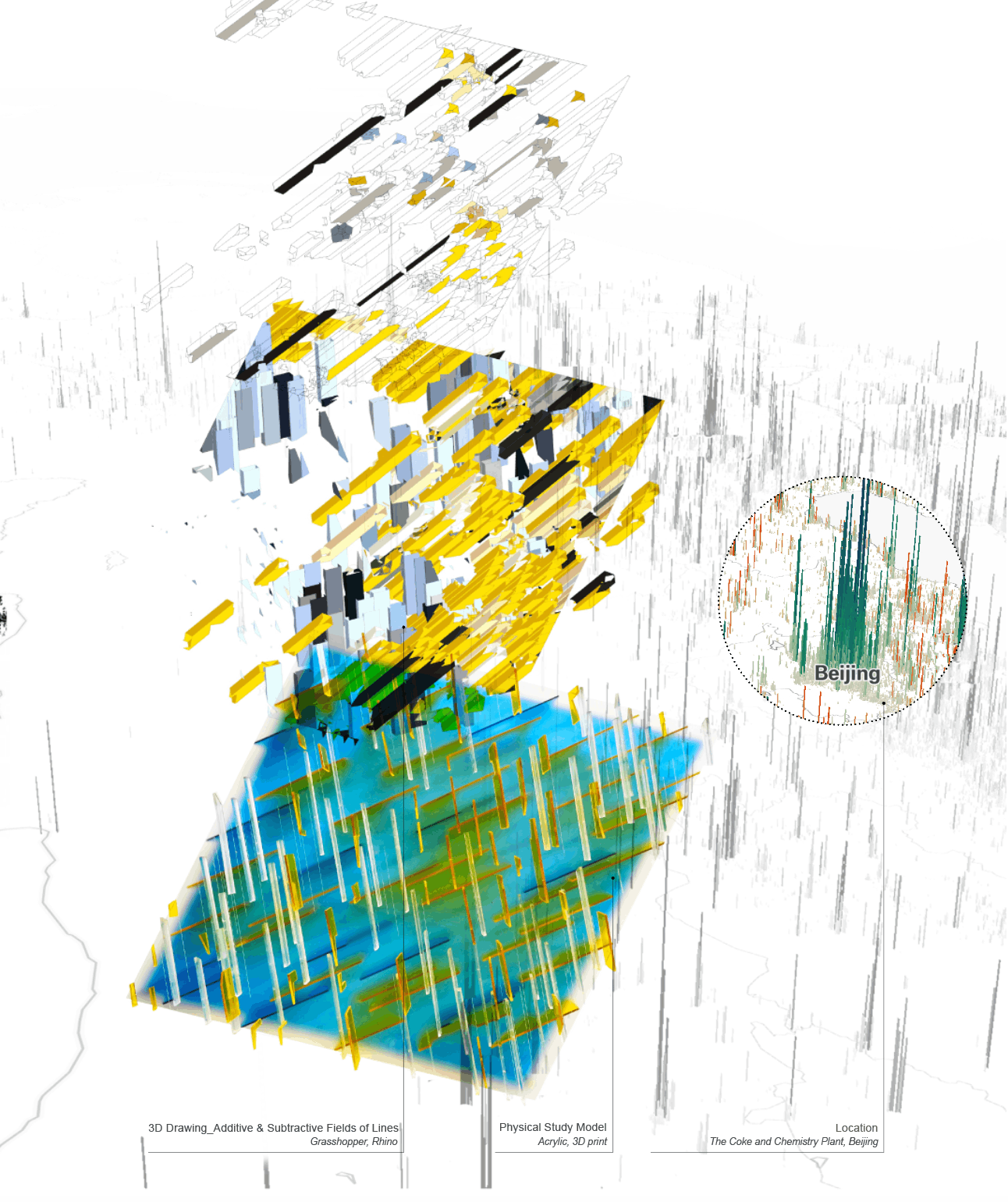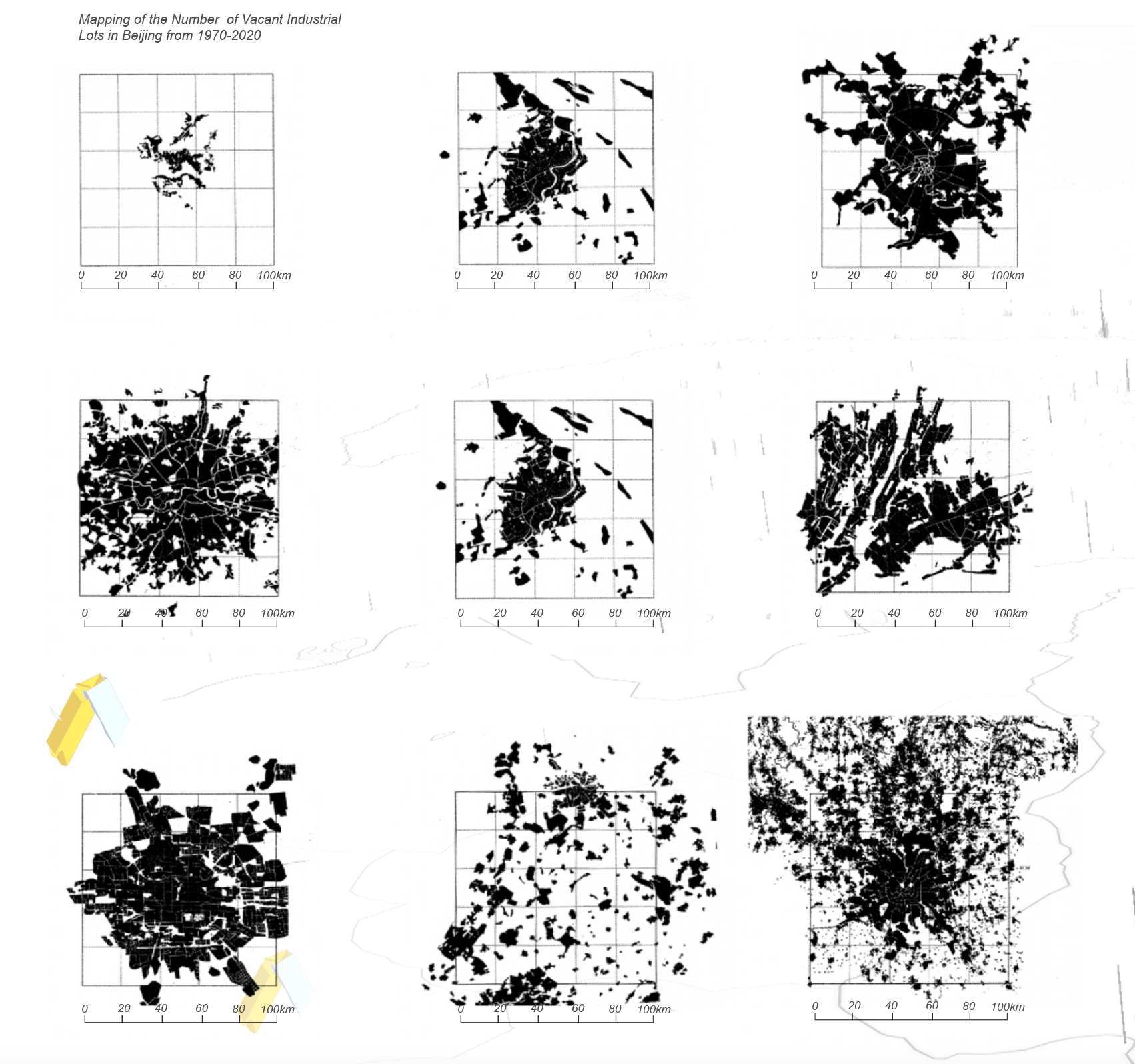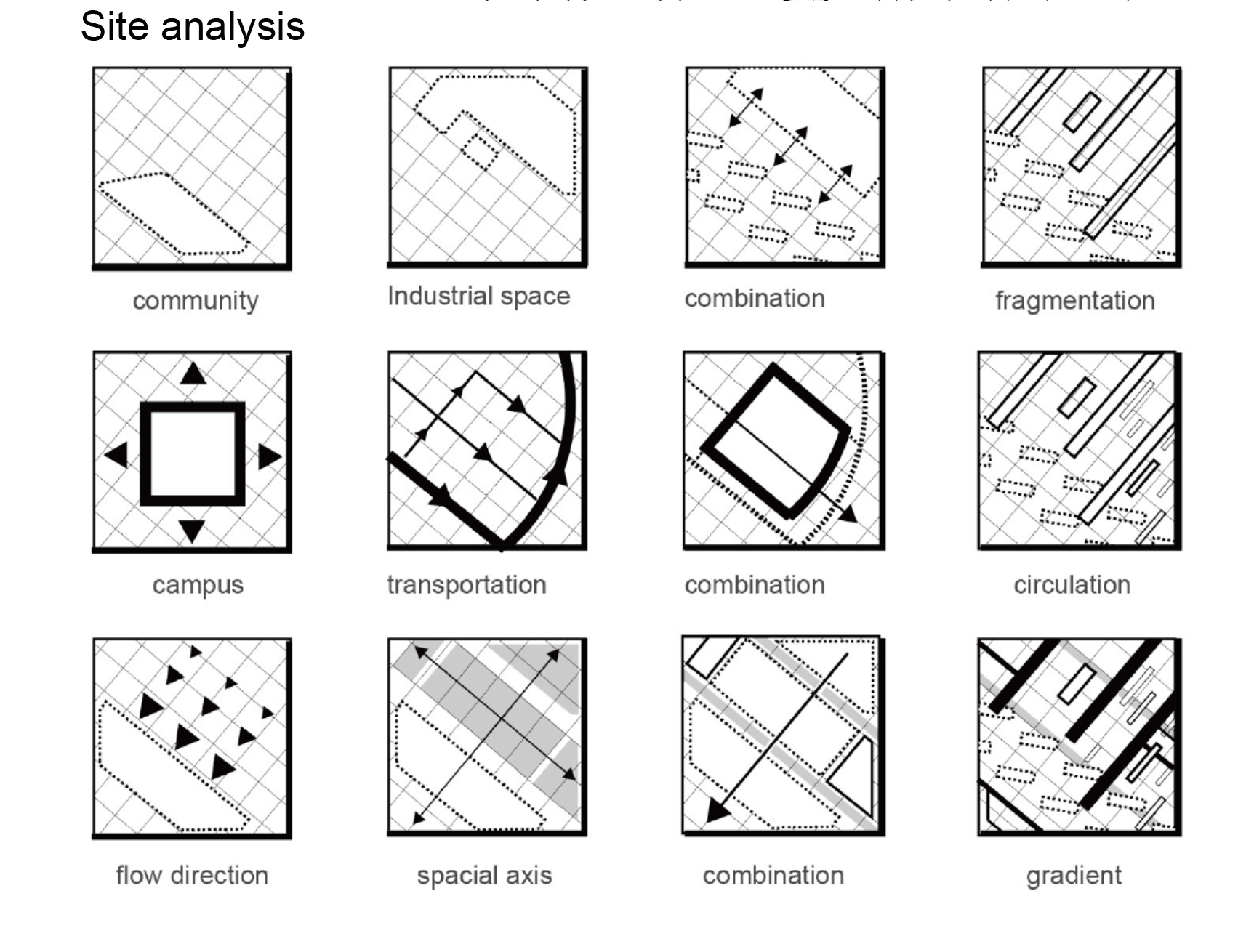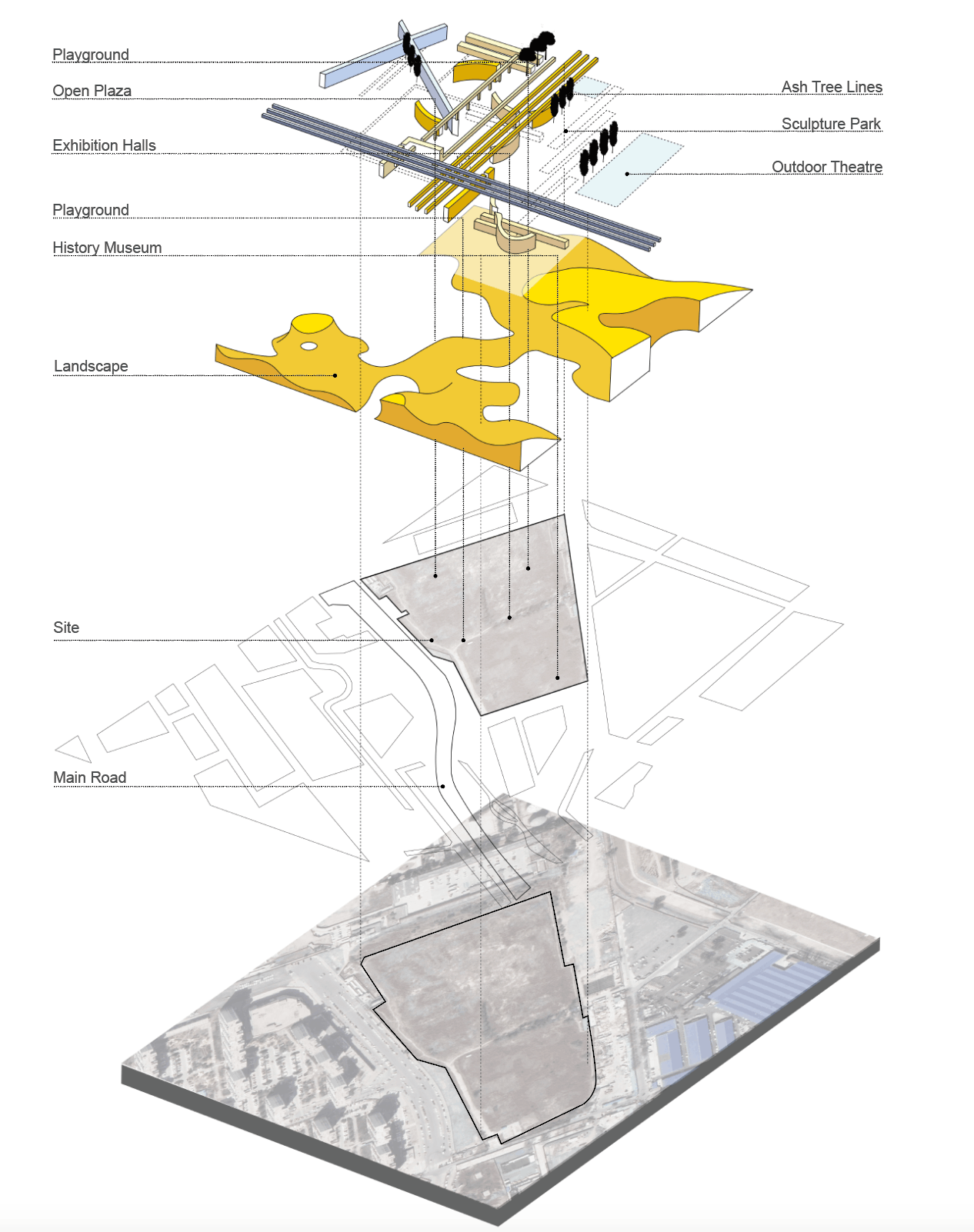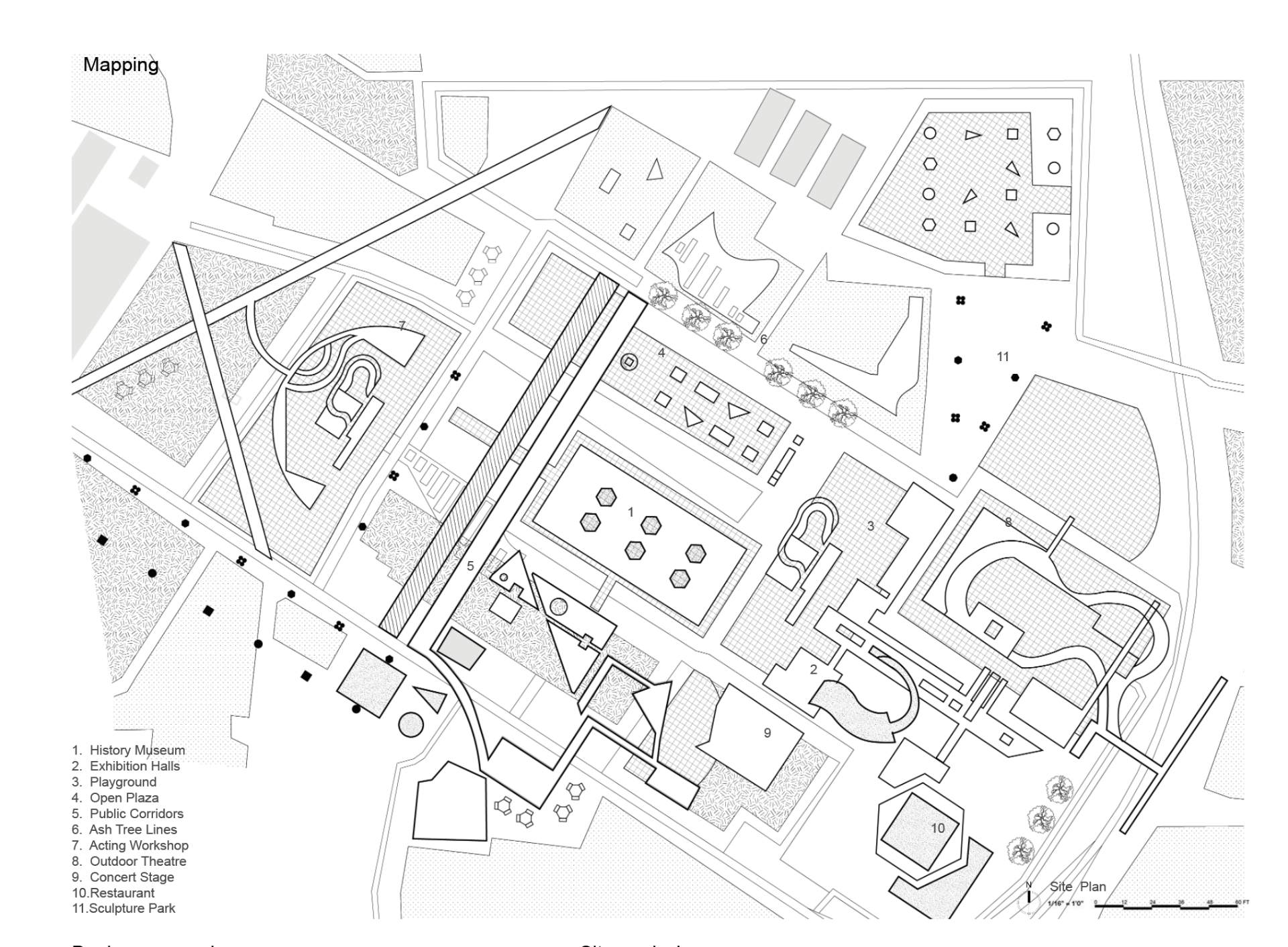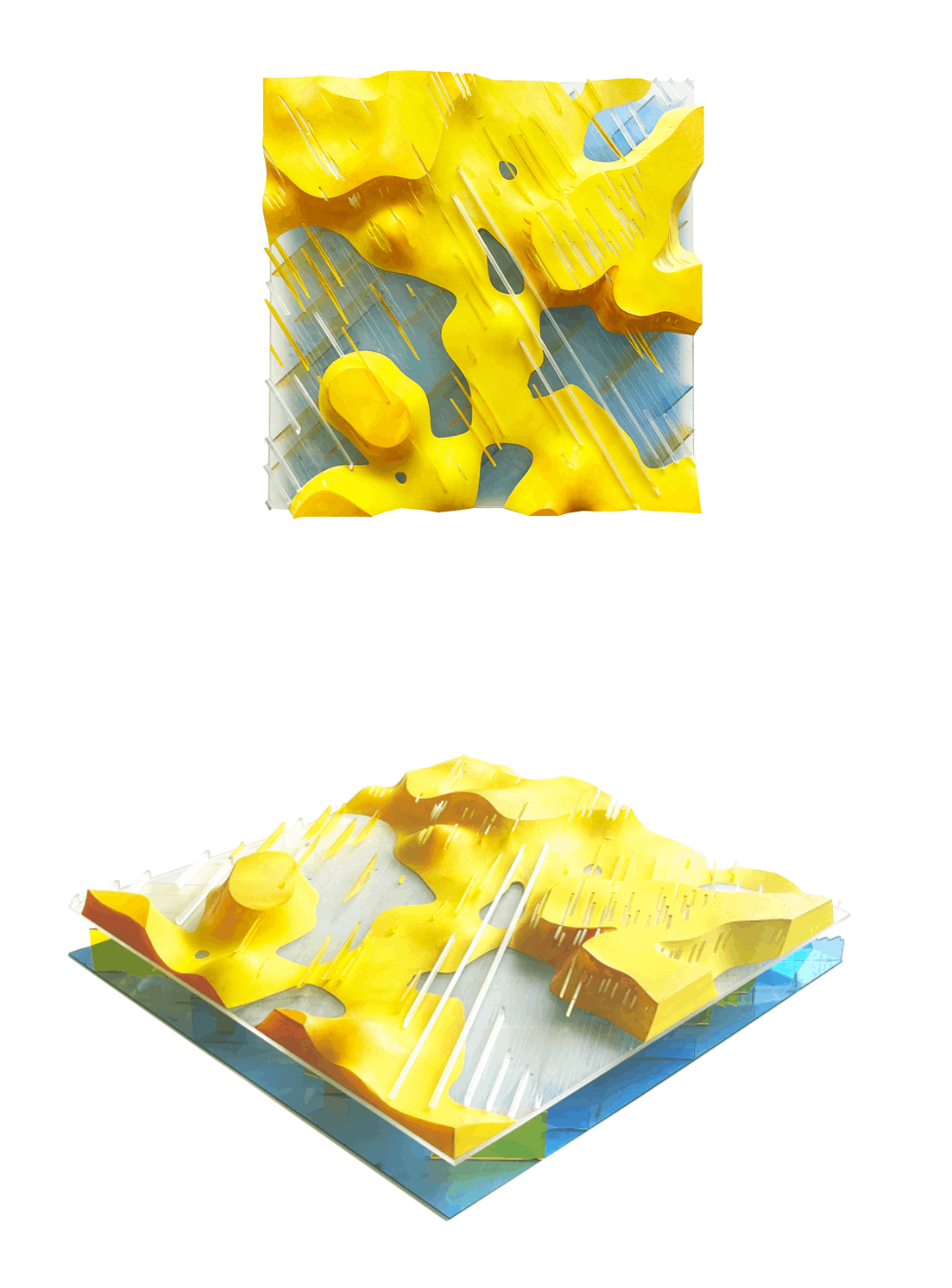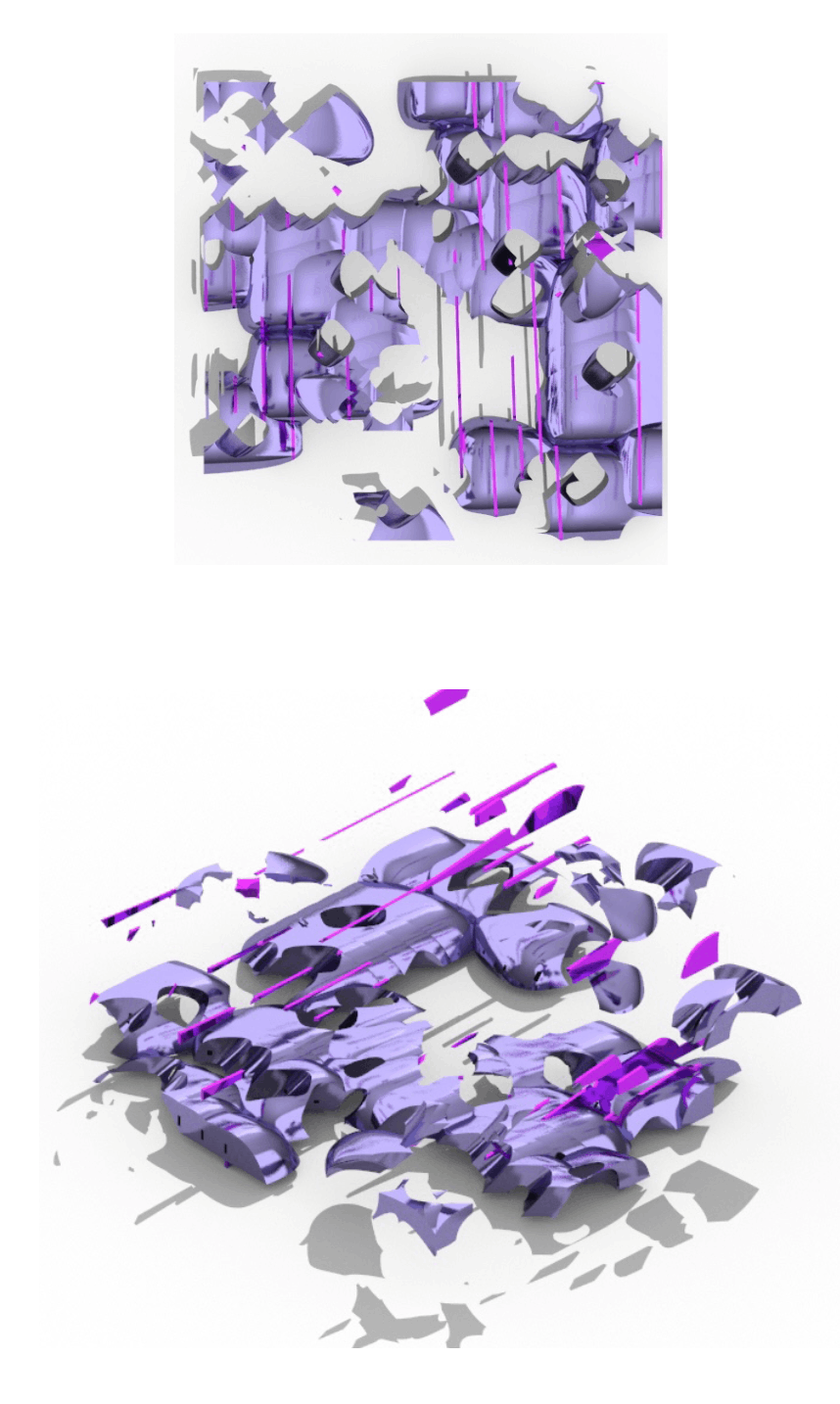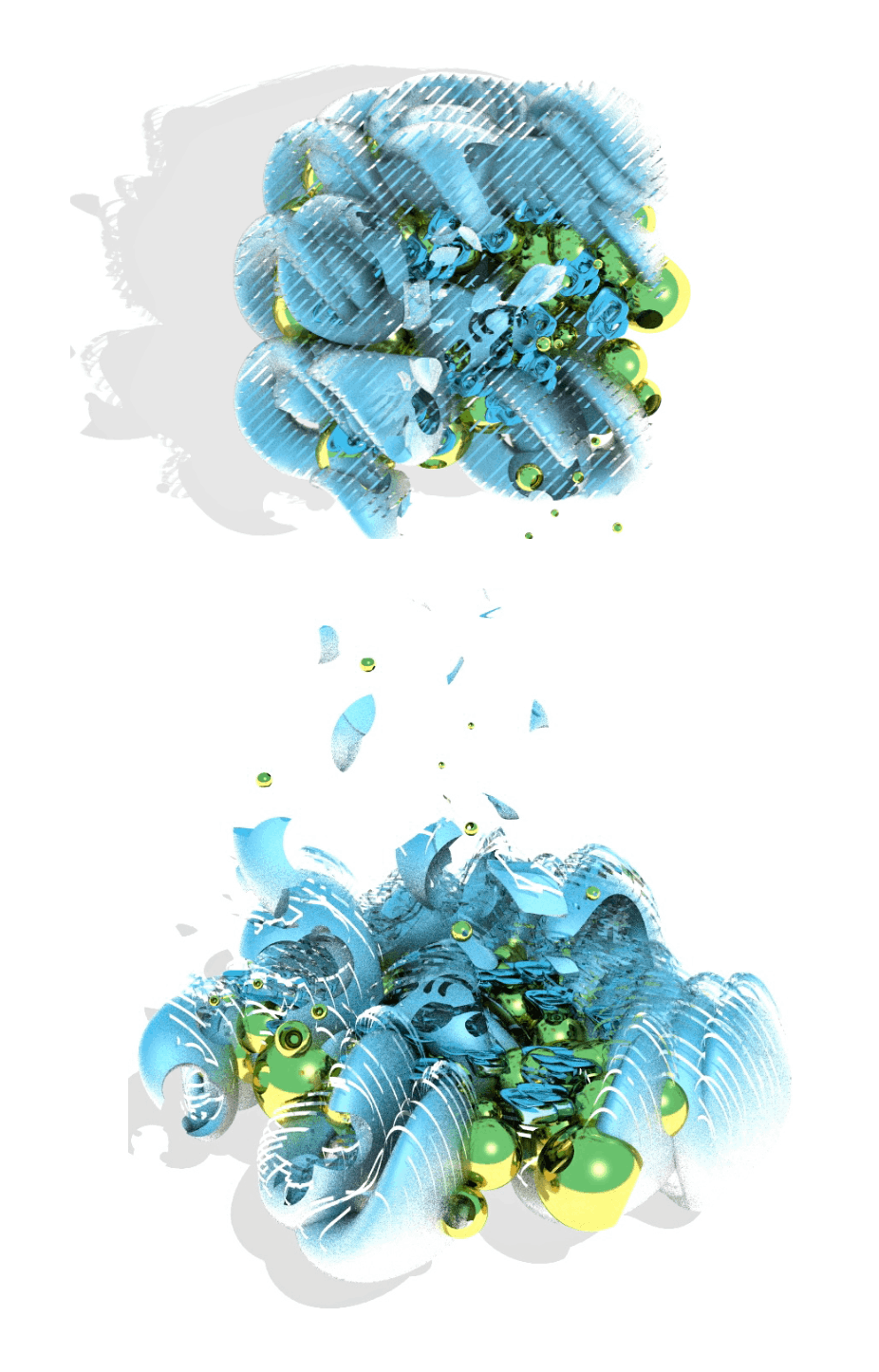Back
Re-constructing City Fragments
Year: 2020
Understanding the existing Chemistry factory as a representation of cultural resources, the project aims to generate a place of happiness, not a monolithic infrastructure, through articulates the identity of the place by introducing a "fragment park."
The renovation site is the Beijing Coking and Chemistry Plant, constructed in 1958. The plant needs to be transformed with new urban functions during the deindustrialization process.
I added an external grid system based on the original city fabricate, hoping to form a dynamic urban space while establishing new connections for the community. Beijing is gradually lost its cultural identity like before, so I searched for a way to respond to the monotonous expansion of the modern city.
Inspired by one of the 3D drawings generated from the grasshopper, I designed a Beijing Coking and Chemistry Plant renovation park. Through exploring the cultural- based community relationship on the Urban scale. I believe in the uncertain destiny of architectural elements within the community, letting residences theirs to self-generated and self-healed.
Through routes connected and the enormous number of cultural facilities added, the use of the park will be intense. The site has a history in Chinese traditional music, so I designed a concert stage to activate the community. At the center of the site, there is a museum that showcases the industry of China: we should not neglect the history but present it beautifully.
This physical model interprets the digital grasshopper script; it reconsiders human intuition and algorithms.
The interpretive ability of images as representation and evidence of a computation-based process created deceptive virtual effects when it became 3d models, which lead me to reconsider the theories of ontological shift.
I generated the color and primary forms from the grasshopper script in this last project. However, I made some shifts and stretched them to another axis based on my design instinct. I continued to explore what can designer’s realization of the unique formal and organizational opportunities can bring to the algorithms.
jiahe hua
More by jiahe hua
View profile